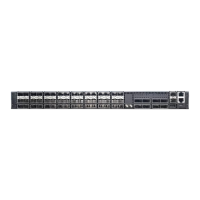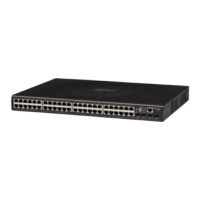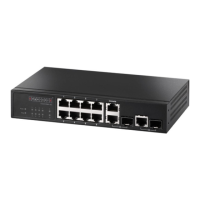Chapter 17
| Spanning Tree Commands
– 452 –
priority - Priority of the a spanning tree instance.
(Range: 0-61440 in steps of 4096; Options: 0, 4096, 8192, 12288, 16384,
20480, 24576, 28672, 32768, 36864, 40960, 45056, 49152, 53248, 57344,
61440)
Default Setting
32768
Command Mode
MST Configuration
Command Usage
◆ MST priority is used in selecting the root bridge and alternate bridge of the
specified instance. The device with the highest priority (i.e., lowest numerical
value) becomes the MSTI root device. However, if all devices have the same
priority, the device with the lowest MAC address will then become the root
device.
◆ You can set this switch to act as the MSTI root device by specifying a priority of
0, or as the MSTI alternate device by specifying a priority of 16384.
Example
Console(config-mstp)#mst 1 priority 4096
Console(config-mstp)#
mst vlan This command adds VLANs to a spanning tree instance. Use the no form to remove
the specified VLANs. Using the no form without any VLAN parameters to remove all
VLANs.
Syntax
[no] mst instance-id vlan vlan-range
instance-id - Instance identifier of the spanning tree. (Range: 0-4094)
vlan-range - Range of VLANs. (Range: 1-4094)
Default Setting
none
Command Mode
MST Configuration
Command Usage
◆ Use this command to group VLANs into spanning tree instances. MSTP
generates a unique spanning tree for each instance. This provides multiple
pathways across the network, thereby balancing the traffic load, preventing

